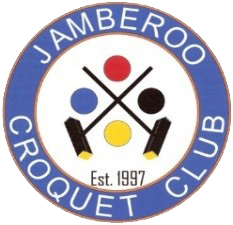Games We Play
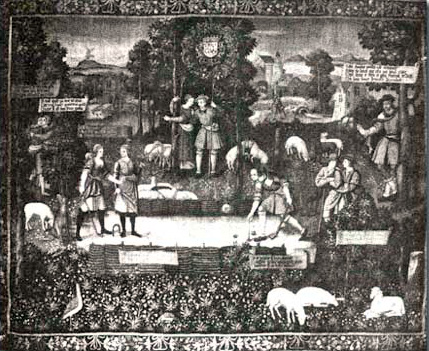
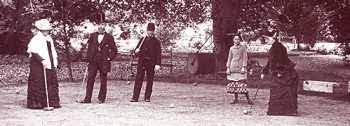
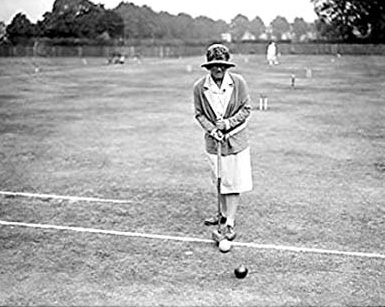
Croquet is a very old game that has its beginnings in the early 1400’s. England developed the initial rules of the game in the mid 1800’s and the game is now played in about 26 countries around the world.
Australia was an early adopter of the game and now has about 8,000 players of which about 3,000 are in NSW.
Since its early beginnings, croquet has evolved into 5 different codes and the rules formalised to provide the modern games.
At Jamberoo we play 2 of the 5 codes, Association Croquet (AC) and Golf Croquet (GC).
Croquet is a game that can be played by people as young as 10 but it is an ideal game for those in the senior age group. It is one of the few games that can be played by people into their 80’s. It can be played equally well by men and women. It is a game that provides moderate physical exercise with a fair amount of mental stimulation and has been recommended by the American Heart Association for its cardiovascular benefits.
Each of the games involves skill in hitting a ball and tactics to outwit the opposition. It can be a ‘no holds barred’ battle on grass as each team attempts to ‘win’ more hoops than their opponent – but in a very civilised way. It has been described as ‘a nasty game played by nice people’.
Croquet can be played competitively or socially. Individual clubs as well as the state organisation hold regular tournaments and carnivals to allow competitive players to pit their skills against players from other clubs. A handicapping system can help level the score between players of different skills. Croquet players tend to be intelligent, positive thinkers with a good sense of humour. It is a very enjoyable and sociable game to play.
You can read more about croquet and Jamberoo Croquet Club at the History of Croquet page of this website.
Association Croquet
Association Croquet is the oldest of the croquet codes and is played at international level.
The game’s distinguishing feature is the “croquet” shot: when certain balls hit other balls, extra shots are allowed.
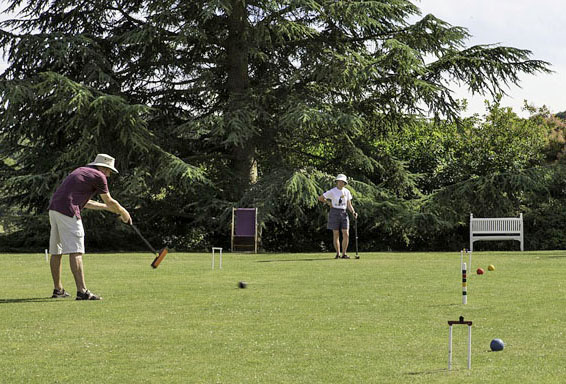
At each turn, the player can choose to play with either of his balls for that turn.
At the start of a turn, the player plays a stroke. If the player either hits the ball through the correct hoop (‘runs’ the hoop), or hits another ball (a ‘roquet’), the turn continues.
Following a roquet, the player picks up his or her own ball and puts it down next to the ball that it hit. The next shot is played with the two balls touching: this is the ‘croquet stroke’ from which the game takes its name.
After the croquet stroke, the player plays a ‘continuation’ stroke, during which the player may again attempt to make a roquet or run a hoop.
Each of the other three balls may be roqueted once in a turn before a hoop is run, after which they become available to be roqueted again.
The winner of the game is the team who completes the set circuit of six hoops (and then back again the other way), with both balls, and then strikes the centre peg (making a total of 13 points per ball = 26).
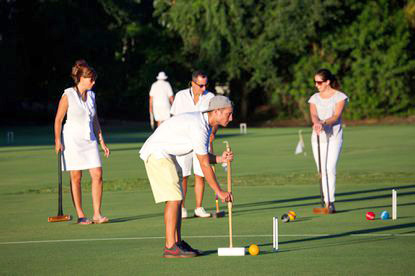
Golf Croquet
Golf Croquet is also played at International level and is increasing in popularity.
The rules are simpler than Association croquet and although a game can be highly competitive, it is quite sociable by virtue of the fact that all players are on the court for the whole game.
The game is played as singles or doubles and the 4 coloured balls (blue, red, black, yellow) must be played in the correct sequence with each player striking his/her own ball once in a turn.
The game commences with each player hitting his/her ball from corner 4. The first team to ‘run’ a hoop (ie put one of their balls through a hoop) in the right direction scores the hoop.
Play then moves to the next hoop in sequence.
The two teams battle for each hoop and this may involve a team using one of their balls to knock an opponent’s ball away from a hoop running position.
The game requires both skill and tactics with the possible options changing after every turn.
In a 13 point game the first team to score 7 hoops is the winner with a typical game being played in about 45 minutes.
.
Contact us if you would like to visit the club and learn more about croquet.
Further information about how to play the game of croquet can be found at
www.croquet-nsw.org
